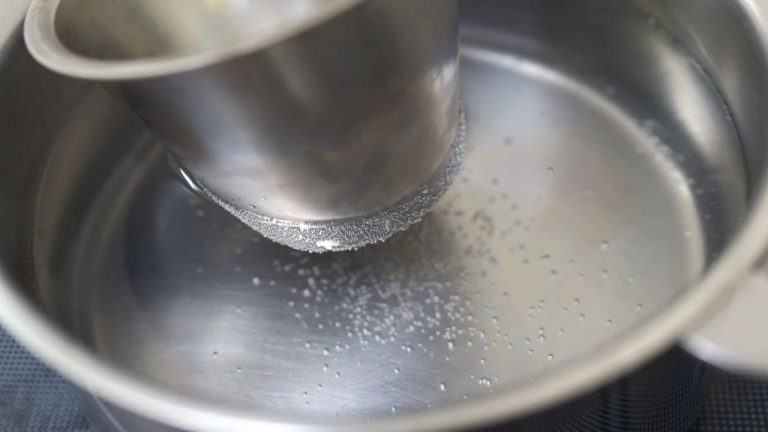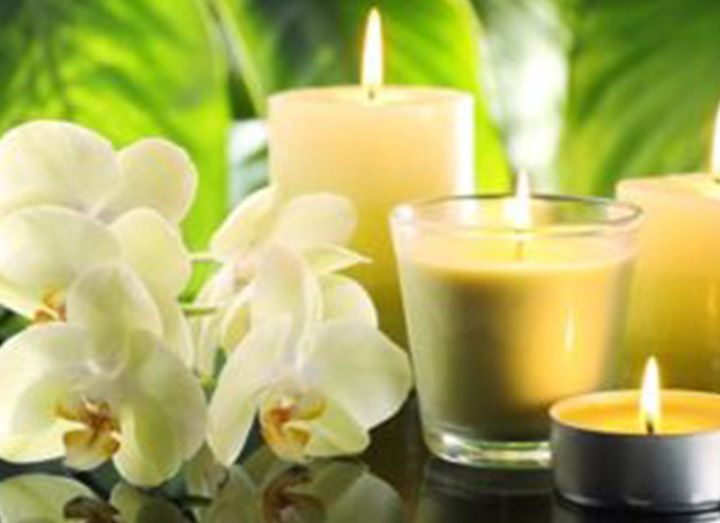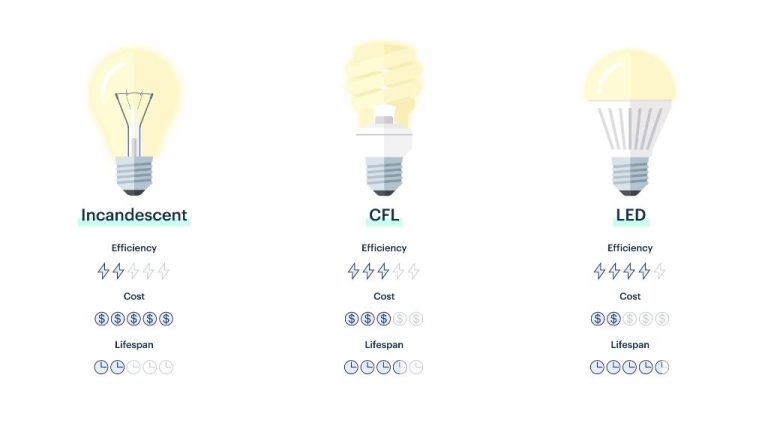Can I Cook With A Candle?
Cooking with just a candle is possible, although in limited ways. With some creativity and care, a candle can provide enough gentle heat to prepare simple foods. This classic, historical cooking method requires patience but can be done safely and practically using items found in most households. While candles lack the power of stoves or campfires, they can be used in a pinch to make basic meals. Understanding the possibilities and limitations for candle cooking allows resourceful cooks to be prepared for unexpected situations or minimalist adventures.
Safety Precautions
When cooking with candles, it’s important to take some basic safety precautions:
Ensure proper ventilation – Make sure you are cooking in a well-ventilated area. Cooking with candles produces smoke and carbon monoxide, so you’ll want to open windows or cook outside. Avoid cooking in an enclosed space.
Have water on hand – Keep a bowl of water or fire extinguisher nearby in case the flame gets out of control. It’s always smart to have a safety measure in place when working with open flames.

Use appropriate containers – Choose containers made of metal, ceramic or glass. Avoid plastic or paper which can easily melt or catch fire. Make sure the container is steady on the surface with no risk of tipping over.
Following basic precautions will help ensure you cook safely with candles. Never leave a burning candle unattended.
What You Can Cook
Cooking with a candle opens up possibilities for heating and preparing small quantities of simple foods. The key is keeping portions small since a candle doesn’t generate as much heat as a stovetop burner. Some foods that work well include:
-
Soup – Heat up a single can or small portion of homemade soup.
-
Eggs – Fry an egg or make scrambled eggs for one.
-
Pasta – Boil water for cooking a 1-2 portion of pasta or noodles.
-
Oatmeal – Make a single-serve bowl of oatmeal or other hot cereal.
-
Beans – Warm up a small can of baked beans or boil water to rehydrate dried beans.
-
Hot dogs – Heat up one or two hot dogs in shallow water.
-
Sandwiches – Melt cheese on an open-faced sandwich or grill sandwich in a pan.
The key is keeping quantities small, about 1-2 servings of food at a time. This allows the food to heat through using just the gentle warmth from a candle.
Cooking Vessels
To cook over a candle, you need a vessel that can hold food or liquid and withstand direct heat. The most common items used are:
- Metal cans – Canned food cans, empty coffee cans, or small metal pots work well. Make sure to remove any plastic lining first.
- Ceramic pots – Small ceramic pots like a ramekin or teacup can hold foods like eggs or beans.
- Tin foil – Shape tin foil into a bowl or pouch to heat foods. Avoid plastic wrap as it can melt.
- Skewers – Metal or wooden skewers allow you to cook small bites like meat, veggies, or fruit.
The key is choosing a small vessel that brings food close enough to the candle flame for heating. The item should be oven and flame safe. Avoid plastic or glass that could melt or shatter.
Setting Up
When cooking with candles, it’s important to set up your workspace properly to keep things safe and efficient. Here are some tips for setting up:
Stable Surface: Make sure to place candles on a flat, stable, and heat-resistant surface. Avoid placing candles directly on tables or counters, as the flame can scorch the surface. Use a tray, ceramic plate, or similar platform.
Wind Protection: Shield candles from drafts, fans, open windows etc. The breeze can make flames unstable, increasing risk. Create a wind barrier with boxes, baking sheets, or other objects.
Arrange Candles: Group candles close together at the center of your vessel for concentrated heat. 2-4 candles are usually sufficient. Make sure flames are at least 1 inch below the bottom of the vessel to prevent scorching.
Heating and Cooking Times
When cooking with a candle, you’ll need to be patient. Everything takes longer than with a stove or oven. The small flame from a candle doesn’t generate nearly as much concentrated heat.
In general, expect heating and cooking times to be at least 2-3 times longer when using a candle. For example, boiling water for pasta may take 20 minutes instead of 10. Simmering a sauce could take over an hour instead of 30 minutes.
The exact time required will depend on factors like the size of your candle, dimensions of the cooking vessel, amount of food, and more. Be prepared to periodically check food and give it plenty of time to cook through.
One way to speed things up is to use multiple candles together. But never leave a multi-candle setup unattended due to increased risk of fire.
Food Safety
When cooking with an open flame, it’s important to take precautions to avoid foodborne illness. Here are some tips:
-
Wash your hands thoroughly before and after handling food.
-
Avoid cross-contamination by using separate utensils and surfaces for raw and cooked foods.
-
Cook foods, especially meat, poultry, and eggs, to the proper internal temperature to kill harmful bacteria.
-
Refrigerate perishable foods within 2 hours; 1 hour if the temperature is above 90°F.
-
Throw away food that’s been left out too long at unsafe temperatures.
-
Make sure all utensils and surfaces are properly cleaned and sanitized.
-
Avoid contact between raw foods and ready-to-eat foods during prep and storage.
Following basic food safety rules when cooking over a candle flame can help prevent foodborne illnesses.
Everyday Uses
Cooking with a candle has several useful everyday applications beyond just recipe preparation. Here are some of the most common everyday uses for cooking with a candle:
Supplemental Heating
Candle cooking can provide supplemental heat for keeping food warm if your main heat source goes out. The candle’s flame gives off enough heat to keep a small dish heated. This comes in handy during a power outage when you want to keep a pot of soup or cup of coffee warm.
Emergencies
In emergency situations like natural disasters that knock out power, candle cooking allows you to heat and prepare basic foods with just a candle and a few essentials on hand. It provides a way to make hot food when you have no other power sources.
Camping
When camping outdoors, a candle can be used to heat up canned foods, make hot beverages, and more. It’s a simple cooking source when you don’t want to fool with campfires or camp stoves. Just pack a few candles and small pots.
Alternatives to Cooking with a Candle
While cooking with a candle can be useful in certain situations, there are other minimalist cooking methods that may work better in everyday circumstances:
Solar Ovens – Solar ovens use energy from the sun to cook food slowly over several hours. They are a renewable and sustainable cooking method. You can make a simple solar oven by lining a cardboard box with aluminum foil.
Rocket Stoves – Rocket stoves are small, efficient wood burning stoves. They use small diameter wood fuel and internal insulated combustion chambers to achieve near-complete combustion. This makes them good for cooking with limited fuel sources.
No-Cook Meals – When no heat source is available, you can make no-cook meals. Some ideas are trail mixes, peanut butter sandwiches, fresh fruits and vegetables, nuts, seeds, jerky, and canned fish or meat.
Haybox Cooking – Also known as retained heat cooking. Food is brought to a boil then placed in an insulated container. The food finishes cooking slowly using the retained heat, without needing additional fuel.
Thermoses – A wide-mouth thermos can cook foods like soups, stews, beans, grains, etc. Boil the food, then pour it into a pre-heated thermos. The insulated thermos allows the food to continue cooking as it retains heat.
Conclusion
Cooking with candles is certainly possible, but does come with limitations. The low heat output means you’ll be limited to heating and cooking small portions of food at a time. It requires patience and creativity to make dishes like eggs, hot dogs, s’mores, and canned foods. Candles work best as a backup option during power outages, while camping, or in small spaces like dorm rooms. While candles can’t replace an oven or stove, they provide a surprising amount of utility for heating and cooking food with the right vessels and techniques. Overall, cooking over a candle flame highlights the determination of people to prepare hot meals even in challenging circumstances.



